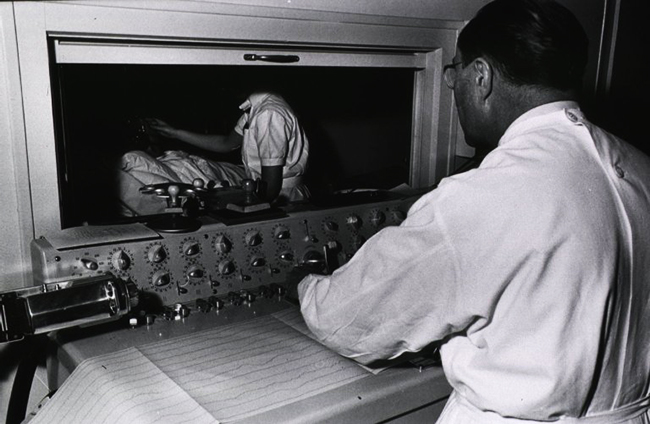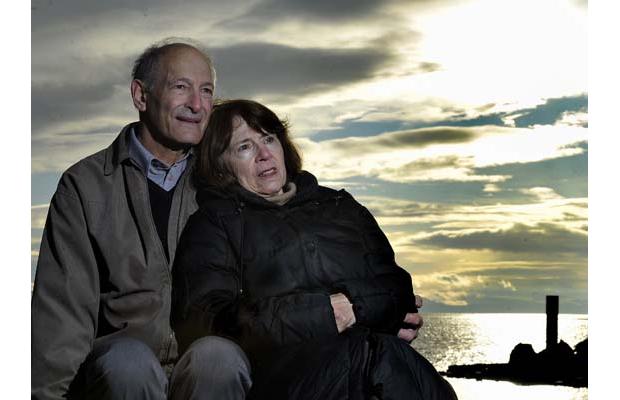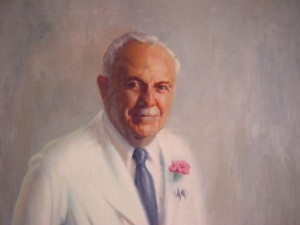Alex Constantine - May 22, 2013
(Adapted from "The Covert War Against Rock," Feral House, 2000)
"I'M NOT SCREAMING, I'M NOT SCREAMING, TELL ME I'M NOT SCREAMING" - Phil Ochs
In 1980, Danish journalist Henrik Kruger collected scraps of suppressed information on the Nixon wing of GOP politics, then observed in The Great Heroin Coup, "Assassination became a modus operandi under Richard Nixon." [1] Political murder, an unplumbed scandal in the bulging file of criminal acts collectively known as Watergate, went unexplored while investigative committees and reporters taking dictation concentrated on milk funds, Nixon's possible knowledge of a routine bugging and the cover-up.
As a result, the dankest political horrors -- including the assassination of celebrities on the left and Nixon's rivals for the White House -- have never been ventilated by the corporate media. Beneath the surface of Watergate ran a spring of excesses far more scandalous than any exposed by the Washington Post, and these never did see the light of day -- for the simple reason that everything known about the Nixon administration was planted in the Post by ranking intelligence officers.
Throughout the Watergate exposures, the media sustained a hands-off policy toward Henry Kissinger, despite the revelation of his threat to "destroy" anyone who leaked information on the secret bombing of Cambodia. He was portrayed by the press not as a perjurer or wire-tapper, but at all times as an eminent statesman and moral bulwark against Communist tyranny.[2].
"Deep Throat" proved to be a shallow well of revelations after all. The depths of CIA corruption under Nixon, particularly political murder, went unreported by the celebrated authors of the Post's Watergate coverage because one of them, Bob Woodward, was himself a cut-out for distant "conservative" forces in the intelligence and military establishment. [3]
This was a "journalist" who could be counted on to contain the Watergate story, steer it away from the most serious acts of corruption.
Bob Woodward has taken a walk around the block repeatedly when asked about his military intelligence bona fides. On June 13, 1965, three days after his graduation from Yale, young Woodward was declared a Navy ensign in a 20-minute ceremony conducted by Senator George Smathers in a school auditorium. (As it happens, the Democratic senator from Florida was a partner in the real estate holdings of the Lansky Family, a branch of the Mafia closely aligned with the CIA. [4])
One Naval intelligence officer on the USS Wright recalls that Woodward held "top secret 'crypto' clearance, which allowed him access to nearly any declassified [government] document."
Woodward had no need for a "Deep Throat."
Reporter Adrian Havill notes that, at the hub of the nation's defense networks, Woodward, as an analyst under Alexander Haig, "had plenty of time to ingratiate himself with the nation's military leadership inside the Pentagon, across the Potomac River from the nation's capital."'
The Nixon administration rose on a foundation of political murder, a fact obscured by Woodward and his editors at the Post, though hints of the truth infrequently floated into view. Killing continued to be a useful policy in the Watergate period, according to Edward Jay Epstein in Agency of Fear (1990):
"E. Howard Hunt, after forging a State Department telegram implicating President Kennedy in the murder of Diem, showed the forged document to [Lucien] Conein, who then appeared on an NBC documentary and divulged its contents. (Hunt also briefed the producer of the program, Fred Freed, on the 'secret telegram,' which shaped the program in such a way as to imply Kennedy's complicity in the murder.) However, in an interview with the Washington Post on June 13, 1976, Conein acknowledged that he had been brought to the Bureau of Narcotics and Dangerous Drugs to superintend a special unit which would have the capacity to assassinate selected targets in the narcotics business." [6]
Assassination was all the rage among Nixon's inner-circle. One of them, "Eduardo" Hunt, mustered a pair of professional hit-men to kill syndicated columnist Jack Anderson: G. Gordon Liddy, subsequently of Watergate and "conservative" talk radio fame, and Dr. Edward Gunn, a toxin specialist and director of the CIA's Medical Services Division.
Liddy's deposition concerning his recruitment to the murder plot was submitted to the court in a 1980 suit filed by Hunt against reporter A.J. Weberman.
Q: Did Hunt ever discuss any assassination plots?
Liddy: Well, there came a time in 1972, I think it was around February, when Mr. Hunt came to me concerning the journalist Jack Anderson. Mr. Hunt came to me, and he said, "Anderson has now gone too far. He has just identified and caused the death or imminent death under torture of one of our human assets abroad." And he, Hunt, had been charged by his principals, meaning his superiors at the White House, with conferring with me and someone from the CIA who was represented as retired, namely Dr. Gunn, as to how best to prevent Mr. Anderson from repeating his behavior.
This meeting was held in the then existing downstairs luncheon room of the Hay Adams Hotel, now no longer in existence. And Mr. Hunt brought up that LSD business again. Dr. Gunn rejected it on technical grounds. I suggested that the only way to effectively stop Mr. Anderson, was to kill him. Mr. Hunt and Dr. Gunn agreed. The remainder of the conversation consisted of how we ought to do it best. The conclusion was that the Cuban assets were to stage a mugging In Washington which would be fatal to Anderson.
Q: All right. Now if Mr. Hunt had said he had merely discussed with you and Dr. Gunn nothing more than a discreditation of Mr. Anderson, would that be correct or incorrect?
Liddy: That would be absolutely incorrect.
Q: The story reflecting this situation occurred in The Washington Post under an article by Woodward and Bernstein. Are you aware of that article, and were you surprised to see that that had come to light?
Liddy: I was in prison at the time .The article was made available to me. I read it at the time. And I was surprised to see that it was incorrect in that it did not narrate the incident as I have just narrated it to you, which is what actually happened. [7]
In July, 1984, Liddy testified in another lawsuit, this one filed by E. Howard Hunt against the ultra-conservative Spotlight press, an arm of the Liberty Lobby, proclaiming that several approaches to disposing of the columnist were considered -- killing methods with the stamp of the CIA. The Agency assigned Hunt the task of killing Anderson, employing methods found routinely in foreign political plots: "We discussed with Mr. Gunn aspirin roulette in which one takes a single tablet of deadly poison, packs it in a Bayer aspirin jar, we place it in the man's medicine chest, and one day he gets the tablet and that's that. Hunt referred to aspirin roulette."
Hunt at this time was employed by the aforementioned CIA front, Mullen and Associates, then run by Washington attorney Robert Bennett.
"We discussed Dr. Gunn's suggestion of the use of an automobile to hit Mr. Anderson's automobile when it was in a turn in the circle, up near Chevy Chase. There is a way ... known by the CIA that if you hit a car at just the right speed and angle, it will ... burn and kill the occupant. ... But what I suggested is we just kill him. And they both agreed that would be the way to go about it, and the task would be assigned to Cuban assets."'
Hunt's employer, the Mullen agency, had a long history of participation in political killings. Rolling Stone reported on May 20, 1976, "The Bay of Pigs and the Kennedy assassination are motifs that run through the Watergate affair. Howard Hunt, the chief Watergate burglar, helped establish a CIA front group for the Bay of Pigs, and Robert Bennett, as head of the Mullen Agency, played a decisive role in the undoing of Richard Nixon." [9]
Liddy's deposition in the Hunt suit exposed a death squad in the executive branch:
"We had perhaps a dozen men who were willing to come on board in this connection. And Mr. Hunt, to impress upon me the high caliber of these individuals, stated that they had accounted among them for a substantial number of deaths [22], including two who had hanged someone from a beam in a garage." [10]
Were these the same "high caliber individuals" who killed gossip columnist Dorothy Kilgallen, the only reporter to interview Jack Ruby? She was one of the very few reporters in the country to question the Warren Commission's findings, told friends in the entertainment industry that she was going to "bust the Kennedy assassination wide open." But she never had the opportunity. She abruptly died of acute barbiturate and alcohol poisoning -- the New York medical examiner could not say whether Kilgallen died accidentally or was murdered -- on November 8, 1965. Mary Branum, one of Kilgallen's editors, received a telephone call several hours prior to the discovery of the body. The anonymous caller informed Branum that the columnist had been "murdered" [11]
Indisputably, she had. This was the conclusion of a forensic chemist who reported to Dr. Charles Umberger at the New York City Medical Examiner's office -- and was told to keep the chemical analysis under wraps -- in 1978. The chemist ran an analysis of the glass Kilgallen had been drinking from when she died, using forensic techniques that did not exist in 1965. The tests turned up traces of Nembutol on the glass ... but Nembutol was not found in her blood. The blood analysis revealed a lethal cocktail of drugs, three from the fastest-acting groups of barbiturates: secobarbitol, amobarbital and phentobarbital. [12] None of these drugs were detected on the glass.
The CIA had assembled a concordia of lethal methods. On April 2, 1979, the Washington Post reported that the Agency had experimented with exotic poisons that left the subject in a condition that would indicate natural causes to an unsuspecting coroner. The project began with an anonymous, undated memo on assassination by "natural causes." "Knock off key people," the heavily censored document specified, "how [to] knock off key guys ... natural causes ..."
And then there's a declassified memo from a CIA consultant to an official of the agency discussing clandestine methods for killing us softly.
1. bodies left with no hope if the cause of death being determined by the most complete autopsy and chemical examinations.
2. bodies left in such circumstances as to simulate accidental death.
3. bodies left in such circumstances as to simulate suicidal death.
4. bodies left with residue that simulate those caused by natural diseases. [13]
Kilgallen was not the only whistle-blower dispatched in the aftermath of the Kennedy assassination. In January, 1968, Ramparts magazine reported on the death of Gerrett Underhill, a staffer at the Army's Military Intelligence Service and advisor to the Agency. "Immediately after the [John Kennedy] assassination, a distraught Underhill told friends that a semi-autonomous CIA clique which had been profiting in narcotics and gun-running was implicated."
A few months later, "Underhill was found dead of a bullet wound in the head."
Some of the same "high-caliber individuals" behind the murders of Kilgallen and Underhill turned up yet again in the shooting of George Wallace, the fiercely segregationist Democratic governor of Alabama who vied with Richard Nixon for the presidency in 1972.
Wallace was campaigning at a shopping center in Laurel, Maryland, an appearance that drew a crowd of some 2,000 supporters. Two critical primaries were a couple of days off and the polls predicted that Wallace would take Michigan and Maryland by a landslide. If he survived the primaries, there was every chance that he could walk away with a sizable share of conservative votes that otherwise would have gone to Nixon.
Wallace was therefore perceived as a threat.
"Remember one thing," Wallace exhorted all in his last campaign speech, "there's not a dime's difference between Nixon and McGovern, or Nixon and Humphrey. It's up to you to send them a message in Washington, a message they won't forget!"
But it was Wallace who received the message when, after stepping down from the podium, a short, plump, grinning 21- year old man in sunglasses pushed through the crowd.
"Hey, George. Over here!" Governor Wallace turned toward the voice of a grinning Arthur Bremer, an unemployed busboy from Milwaukee, who produced a snub-nosed .38 caliber revolver and fired four rounds into the candidate from Alabama. Three of the governor's entourage were also wounded before the gun was pried from Bremer's hand.
Wallace survived but spent the remainder of his life in a wheelchair, his legs paralyzed. He took potent anti-depressants for years after the shooting.
Bremer was summarily convicted on four counts of assault with intent to kill and was led away to serve a 53-year prison sentence. It was quickly determined that he had acted alone. Subsequent events suggest otherwise.
A few minutes after the shots were fired, Nixon aide Charles Colson directed E. Howard Hunt to fly to Milwaukee, break into Bremer's apartment and recover all "embarrassing evidence," according to Woodward and Bernstein in All the Presidents Men.
Gore Vidal, novelist and literary critic, opined that Hunt actually penned Bremer's diaries. Wallace himself stated openly, "my attempted assassination was part of a conspiracy."
All told, the four victims suffered 18 bullet wounds -- but Bremer's gun was a five-shooter. Arthur told his brother that he had accomplices who had paid him handsomely to shoot George Wallace. Bremer was out of work, so who picked up the tab for his repeated stays at the opulent Waldorf-Astoria in New York?
Milwaukee police files on Bremer portrayed him as a "subversive" with ties to Students for a Democratic Society (SDS). These were seized after the shooting and classified secret by the ATF acting "under the highest authority."
Tim Heinan, a Marquette University student who moonlighted as an undercover agent for the Milwaukee Police Department's Special Assignment Squad, learned that Arthur Bremer had ties to a CIA operative named Dennis Salvatore Cossini, a federal "counter terrorist" who specialized in the infiltration and control of radical organizations including the local SDS chapter the gunman had joined. The agent was fired after Heinan confessed his links to Bremer. Cossini headed for Toronto and was next seen dead, slouching in a parked car with an overdose of heroin in his veins. One of the police investigating the death mused: "Somebody gave him a hot shot." [14]
Heroin "overdoses" would recur in the coming hit parade, and the Nixonites would dance on the graves of the casualties in a covert war that ultimately altered the political course of the country. ...
NOTES
1. Heinrik Kruger, The Great Heroin Coup: Drugs, Intelligence & International Fascism, Boston: South End Press, 1980, p. 164. Kruger and others have documented assassination and extermination campaigns in Vietnam, Guatemala, Argentina and Brazil -- represented in Latin America by local death squads. "The White House appears to have sponsored a secret assassination program under cover of drug enforcement. It was continued by the DEA, which seemingly overlapped with the CIA in political rather than drug enforcement. Until 1974 the training of torturers [and] Latin American death squads came under the auspices of the CIA and USAID's Office of Public Safety."
2. Henry Kissinger, an old CIA hand, was untouched by the scandal. He lied repeatedly to Congress concerning illicit wiretaps placed by his office on the telephones of newspaper reporters and National Security Council staff, yet gracefully escaped leaving the administration in disgrace with Richard Nixon (See, John Marks, "The Case Against Kissinger: Rolling Stone, no 166, August 1, 1974, pp 10-14).
3. Adrian Havill, Deep Truth: The Lives of Bob Woodward and Carl Bernstein, New York: Birch Lane, 1993, p 43.
4. Kruger, p. 155. Senator Smathers was a controlling shareholder in the Major Realty Co. with Lansky subordinates Ben Siegelbaum and Max Orovitz.
5. Admiral Moorer, Woodward's superior officer, was the stereotypical hard-bitten Pentagon hawk, a close friend to two of the most powerful Nixon appointees, Henry Kissinger and John Mitchell. He was an enigma to most employees at the Pentagon, best known for his temper tantrums. The Admiral, a ferocious anti-communist, pushed for open warfare with the Soviet Union and denounced as a "dirty bastard" and "unshaven peacenik" anyone who disagreed with him on this score or any other. He was the most feared official in Navy history. Mark Perry, a Nation correspondent, found that Moorer's "apparent lack of intelligence was his most important quality." Thus the Nixon administration's "secret plan to end the war" echoed Moorer's sentiments. The "plan": the US should step up the Vietnam war to pressure North Vietnam to concede. Nixon considered Moorer to be a model "loyalist," a figure he could respect. The Admiral won a reappointment to chairman of the Joint Chiefs in 1972, and continued to urge Nixon on to more devastating levels of military violence in Vietnam.
Under the watch of Admiral Thomas Moorer, Bob Woodward held authority over all communications to the Naval wing of the Pentagon, including the Secretary of the Navy's office. The Admiral and former Secretary of Defense Melvin Laird both stated on tape in 1989 interviews that Woodward's duties included briefing Alex Haig at the Nixon White House. "Later," Havill found, "Moorer attempted to back away from his recorded statement."
The Admiral back-stroked, made "contradictory statements and [sounded] befuddled. Laird said he was 'aware that Haig was being briefed by Woodward.'"
6. Edward J. Epstein, Agency of Fear: Opiates and Political Power in America, Verso Books, 1990. First published in 1977 by Putnam.
7. Liddy Deposition, September 30, 1980. Hunt v. Weberman.
8. Hunt's testimony, July 11, 1984 Hunt v. Spotlight, USDC Miami, Florida.
9. Howard Kohn, "The Hughes-Nixon-Lansky Connection: The Secret Alliances of the CIA from World War II to Watergate," Rolling Stone, May 20, 1976.
10. Hunt v. Weberman.
11. Lincoln Lawrente, Mind Control, Oswald & JFK: Were We Controlled? Kenn Thomas, ed, Kempton, IL Adventures Unlimited, 1997, pp. 162-63.
12. Lee Israel, Kilgallen, New York, Delacourte, 1979, p. 441.
13. Jim Marrs, Crossfire: The Plot that Killed Kennedy, New York Carroll & Graf, 1989, p 557. A significant CIA leak confirms that the Agency has a keen interest in the lethal arts. Barry Rothman, a CIA assassination methods specialist, was interviewed by Playboy in January, 1977, and explained that he'd been enlisted by an unidentified spy with "an encyclopedic knowledge of guns, particularly Nazi weaponry." The recruiter was "a fascist, basically. He had a deep- seated, violent prejudice against anything that wasn't Aryan." Rothman was recruited in 1952 and graduated from the development of certain explosives to sophisticated biochemical warfare toxins. Not an agency to let talent go to waste, the CIA requested that he write a handbook on improvised weapons systems. He surveyed plant poisons. "Common things you can walk out and find right now in your backyard can, if treated properly, yield very deadly poisons that are not easily detectable. I think I included about forty plants and instructions on how to use them. The Agency was very pleased with it." He moved on to biological agents that "can be made without too much grief. There are a fair number of those." But there was "one peculiar thing" about the CIA assignment that disturbed him. "I was specifically instructed to orient [the handbook] toward domestically available materials and plants. Plants that grow in the U.S. and materials that are sold in the US. What that means, I don't know, but it makes you wonder."
14. Eric Norden, "The Shooting of George Wallace -- Who Really Wanted Him Dead," April 19,84, pp 21ff.









No comments yet.